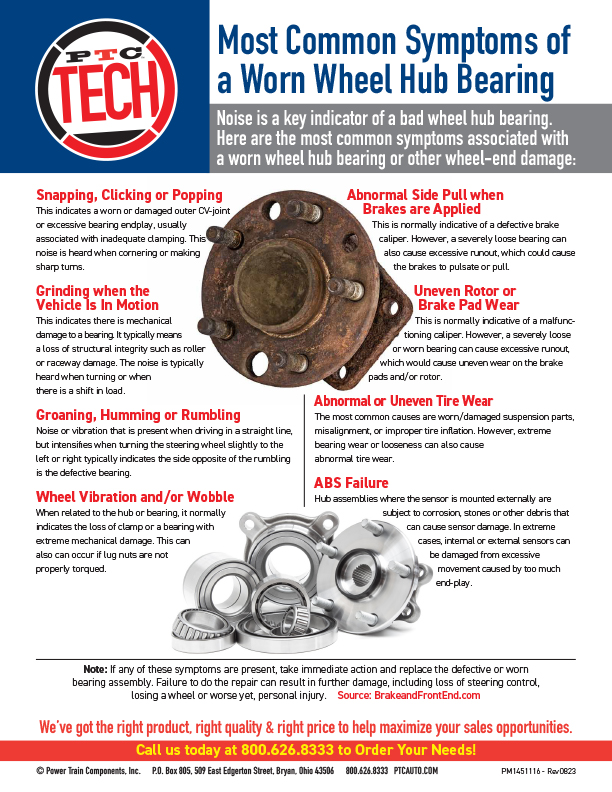Most Common Symptoms of Worn Wheel Hub Bearing
How to Spot Symptoms of a Worn Wheel Hub Bearing
Noise and vibration are two of the most common signs of a failing hub bearing. Left unchecked, a worn or damaged bearing can lead to serious safety concerns—including loss of steering control or wheel separation. Here’s how to catch the issue before it becomes a bigger problem.
Snapping, Clicking, or Popping
These sounds, especially when turning, may indicate a worn CV-joint or excessive bearing endplay due to inadequate clamping force.
Grinding While the Vehicle Is Moving
This noise suggests internal mechanical damage such as roller or raceway wear. It’s often more noticeable when turning or during load shifts.
Groaning, Humming, or Rumbling
If you hear rumbling that intensifies during gentle turns, the issue likely lies with the opposite wheel bearing. This can indicate roller degradation or bearing looseness.
Wheel Vibration or Wobble
Caused by loss of clamp or severe mechanical bearing damage. Also a possible result of improperly torqued lug nuts.
Abnormal Side Pull During Braking
Though often related to a faulty brake caliper, excessive bearing looseness can also cause runout that affects brake performance and stability.
Uneven Brake Rotor or Pad Wear
A failing bearing can cause runout that results in uneven pad or rotor wear—often misdiagnosed as a brake issue alone.
Abnormal or Uneven Tire Wear
Worn suspension or misalignment are common causes, but severe bearing wear or play can also lead to irregular tire wear.
ABS Failure
Debris or excessive end-play can damage wheel speed sensors, especially when mounted externally. This can trigger ABS warning lights or cause system malfunction.

